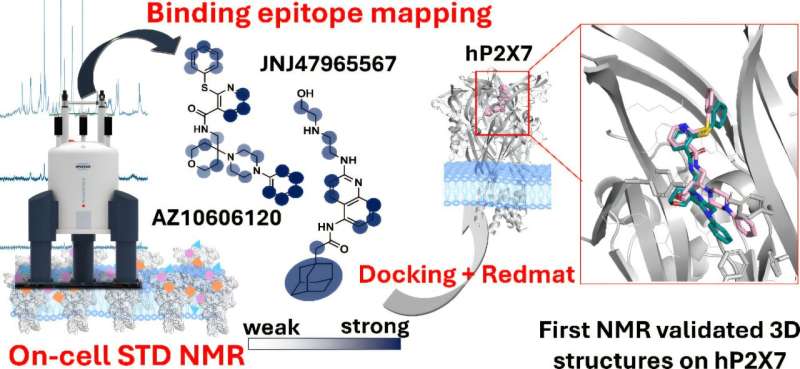
An international team of researchers has introduced a groundbreaking technique designed to enhance the speed and efficiency of drug development targeting ion channels, crucial proteins implicated in various diseases. This innovative approach, developed by the Institute of Chemical Research, a collaborative center between the University of Seville and the Spanish National Research Council, promises to accelerate the discovery of therapeutics for conditions ranging from psychiatric disorders to several forms of cancer.
The study, published on November 15, 2025, in the Journal of the American Chemical Society, involved collaboration with the University of East Anglia and the Quadram Institute in the United Kingdom. Researchers have focused on ion channels, which play a critical role in regulating ion passage across cell membranes and are vital for functions such as nerve transmission and muscle contraction.
Advancements in Drug Interaction Studies
Traditionally, investigating how drugs interact with ion channels required complex processes to isolate these proteins, which often altered their natural behavior. The new method employs nuclear magnetic resonance (NMR) technology to examine these interactions within living cells. Jesús Angulo, a researcher at the Institute of Chemical Research, emphasizes the significance of this advancement: “Our technique allows us to study these interactions in a biologically relevant context, providing better information than previous methods.”
This novel approach is not only faster—allowing experiments to be completed in less than an hour—but also more cost-effective and straightforward. It eliminates the need for intricate preliminary purification or manipulation of proteins, making it a potential standard tool for structure-activity relationship studies. These studies aim to elucidate the connection between a drug’s chemical structure and its pharmacological effects.
Implications for Future Drug Development
The new technique has already been successfully applied to P2X7 receptors, which are significant therapeutic targets for several conditions, including depression, certain autism spectrum disorders, and various cancers. Serena Monaco from the Quadram Institute highlights the practical applications of this research: “We can identify which parts of the drug interact with the protein in living cells, enabling us to optimize these interactions. This information is crucial for developing more effective and specific drugs.”
Additionally, the research team utilized specialized software developed at IIQ-CSIC-US to integrate their experimental findings with three-dimensional models of drug-receptor interactions generated through bioinformatics. This integration allows researchers to confirm which computational models align with laboratory observations.
Angulo provides an analogy to explain the drug-protein interaction: “The interaction between drug and protein can be compared to a lock and key. The membrane protein is the lock, and our key is the drug. It’s essential to find the correct key and understand how to insert it effectively.”
The researchers believe that their findings represent a significant step forward in drug design, particularly for therapies targeting ion channels and other membrane proteins. This new paradigm in pharmacological studies could pave the way for innovative research across various fields, including neurological, cardiovascular, metabolic, and oncological diseases.
For further details, refer to the study by Serena Monaco et al., titled “On-Cell Saturation Transfer Difference NMR Spectroscopy on Ion Channels: Characterizing Negative Allosteric Modulator Binding Interactions of P2X7,” published in the Journal of the American Chemical Society (2025).







